Boutin, Leonce Germain
Killed in Flying Accident 1981-02-26
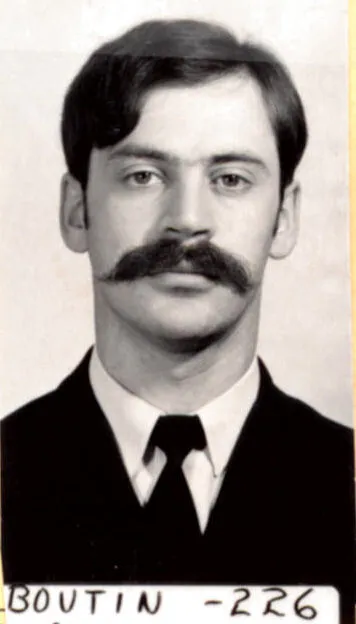

Birth Date: 1952-May-06
Born: Lac St-Jean, Quebec
Son of Omer and Germaine (nee Gobeil) of Notre Dame de la Dor, Quebec.
Home: Lac St-Jean, Quebec
Enlistment: Chicoutimi, Quebec
Enlistment Date: 1972-01-24
Service
RCAF
Unit
433 Sqn- Squadron
Qui S'y Frotte S'y Pique Who opposes it gets pricked
Base
Rank
Captain
Position
Captain
Service Numbers
F32181080
Northrop Freedom Fighter CF-116 CF-116A CF-5 CF-5A CF-5D
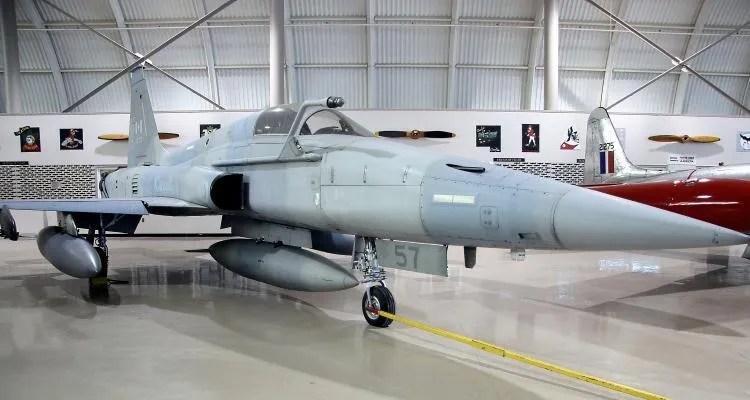
Canadian Warplane Heritage Museum
Northrop Aviation designed the F-5 Freedom Fighter in the mid 1950s to meet an anticipated need for a lightweight, well armed, supersonic fighter that was relatively inexpensive. Initially the USAF was not interested in such an aircraft, but did require a supersonic trainer. It encouraged continued development of a two seat version, which became the T-38 Talon trainer. In May 1958, the US Defense Department reconsidered its position and ordered three prototypes for its Military Assistance Program (MAP). The first prototype flew in July 1959 and exceeded Mach 1 during its first flight. After another three years of development, the F-5 was selected by the Defense Department for the MAP in 1962.In 1965 the RCAF decided to replace its home based North American Canadair Sabres with a new aircraft. The F-5 was chosen and Canadair was selected to manufacture it, with Orenda Ltd. of Toronto building its General Electric J85(GE)-15 turbojet engines. A total of 89 CF-5A fighters and 46 CF-5D trainers were purchased by the Canadian Armed Forces.Production of the CF-5A started in Montreal in 1967 and the first aircraft flew from Edwards AFB, California in May 1968. The first CAF unit to receive aircraft was AETE (Uplands), when both fighter and trainer versions were delivered for testing at the end of 1968. No. 434 "Bluenose" Squadron at CFB Cold Lake, Alberta was equipped with CF-5s soon after in 1969. No. 433 "Porcupine" Squadron, reactivated in September 1969 at CFB Bagotville, was the other squadron to receive CF-5s that year. Later on, both No. 1 FTS (Cold Lake) and No. 419 "Moose" Squadron flew CF-5s in both trainer and tactical fighter roles. The CF-5A continued in service as a tactical fighter until 1988, when the CF-18 Hornet replaced it. The CAF continued to use CF-5Ds as advanced trainers until 1995.A total of 2,350 F-5 Freedom Fighters were produced, between 1962 and 1975; 240 of them by Canadair in Montreal (135 for the CAF and 105 for the Royal Netherlands Air Force).The Museum's CF-5A was built by Canadair in Montreal in 1970. After it was retired from the Canadian Forces in 1989, it was moved to the RCAF Memorial Museum in Trenton, Ontario. Canadian Warplane Heritage Museum acquired the aircraft from the Department of National Defence in 1996..Canadian Warplane Heritage Museum
 CF-116 Freedom Fighter Kestrel Publications
CF-116 Freedom Fighter Kestrel Publications
433 Sqn Qui S'y Frotte S'y Pique ("Porcupine")
History of the Squadron during World War II (Aircraft: Halifax III, Lancaster I, III)
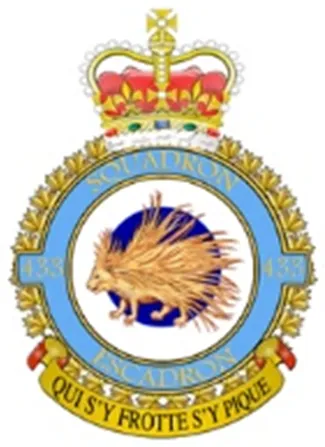
433 Squadron was the 14th and last bomber squadron of the RCAF to be formed overseas in WWII. It was formed in September 1943 as a unit of No 6 (RCAF) Group of Bomber Command. It flew from Skipton-on-Swale, Yorkshire, UK for the whole of its operational career. With the squadron code letters BM, it originally flew Handley Page Halifax Mk III heavy bombers on its bombing missions, but these were replaced by Lancaster Mks I and III in January 1945. After the cessation of hostilities the squadron was retained in England as a unit of No 1 Group RAF from August 1945, and took part in the airlift of PoWs back to England (Operation EXODUS) and the bringing back of troops from Italy (Operation DODGE). The squadron was disbanded at Skipton in October 1945.
In the course of its operations, the squadron flew 209 missions involving 2316 individual sorties for the loss of 38 aircraft , dropping 7486 tons. Awards to crew members included 132 DFCs, 2 Bars to DFC, 9 DFMs, 1 BEM, 14 MiDs and 1 Air Medal (USA). Battle Honours were: English Channel and North Sea 1944-45, Baltic 1944-45, Fortress Europe 1944, France and Germany 1944-45, Biscay Ports 1944, Ruhr 1944-45, Berlin 1944, German Ports 1944-45, Normandy 1944, Rhine, Biscay 1944.Wikipedia, Kostenuk and Griffin
Squadron History (Bomber Command Museum PDF)
Maps for Movements of 433 Squadron 1943-45
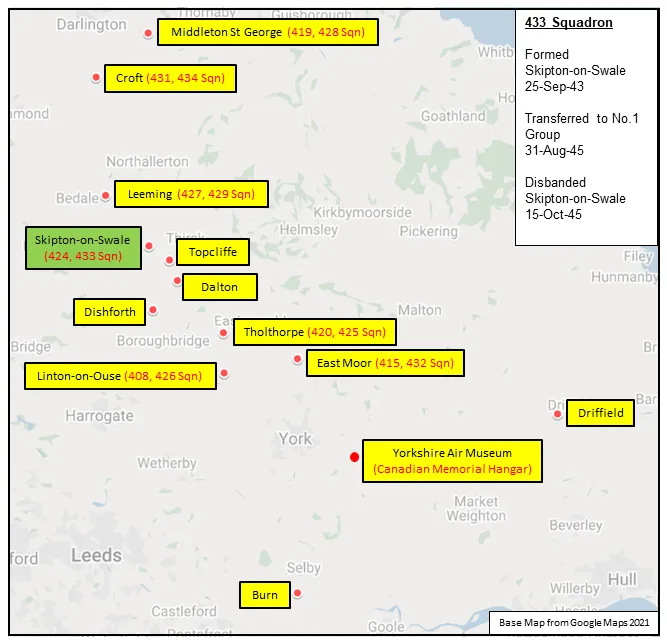
433 Squadron History Summary 1943-45
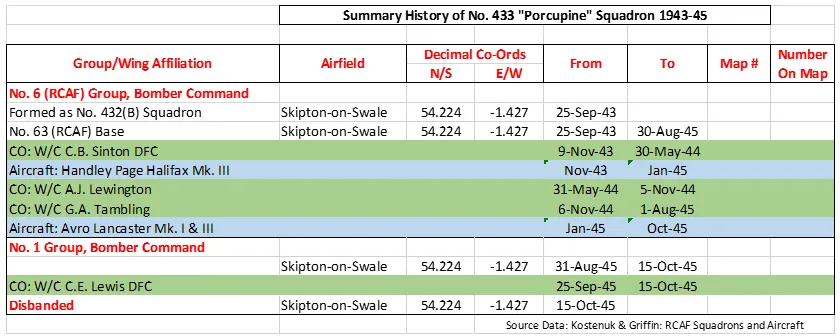
History of the Squadron Post-WWII (Aircraft: Canuck, Freedom Fighter, Hornet)
The squadron re-formed as an All-Weather (Fighter) unit at CFB Cold Lake, Alberta , on 15 November 1954, as one of nine CF-100 squadrons to defend Canadian airspace. It moved to CFB North Bay, Ontario , in October 1955, the squadron flew CF-100 Canuck aircraft on North American air defence. However, in 1961 the Government decided to reduce the number of CF-100 squadrons from nine to five and 433 Squadron was dissolved for a second time on July 31st, 1961.
Reformed post-unification on 15 August 1968, as No. 433 Escadrille tactique de combat it was a French language squadron of Mobile Command based at CFB Bagotville, Quebec . The squadron flew the CF-5 Freedom Fighter in the tactical and reconnaissance role until it converted to the CF-188 Hornet fighter jets in 1984. The squadron was deactivated in 2005, and its assets and personnel amalgamated into 425 Tactical Fighter Squadron. Besides being originally designated as one of two bases of NATO's Rapid Reaction Force, the 433 Squadron was entrusted a NORAD role in December 1988. The 433 Squadron members in Bagotville played an important role in the Gulf War conflicts, better known under the names Operation FRICTION in 1991 and Operation ECHO in 1999. By September 2001, the Squadron was actively participating with NORAD in the fight against terrorism through Operation NOBLE EAGLE. On July 14th, 2005, the standards of the Squadron were once again laid aside almost 62 years after its initial formation. .Wikipedia
The squadron was reactivated on 9 June 2015, and celebrated its 75th anniversary on 15 September 2018.
 Lac St-Jean, Quebec
Lac St-Jean, Quebec Canadian Virtual War Memorial
Canadian Virtual War Memorial www.findagrave.com
www.findagrave.com Freedom Fighter
Freedom Fighter Wikipedia Freedom Fighter
Wikipedia Freedom Fighter Harold A Skaarup Web Page
Harold A Skaarup Web Page